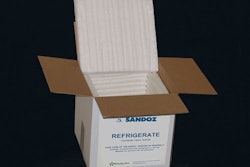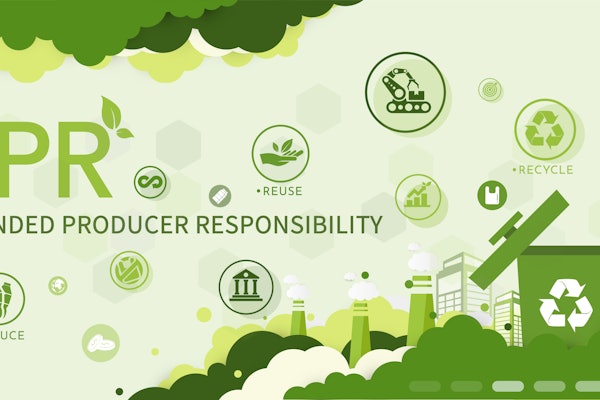
Healthcare Packaging Publisher Jim Chrzan followed a recent LinkedIn conversation in which packaging professionals professed concerns about potential regulatory matters pertaining to the use of plastic or wood pallets.
In the conversation, a contract packager (CP) lamented that different customers have different interpretations of packaging law regarding the use of plastic pallets for packaging materials before they go into a packaging room. The CP person noted that such a law would require workers to manually transfer materials from wooden pallets to plastic pallets, adding labor costs and increasing the potential for worker injuries. A LinkedIn respondent in Europe indicated that Australia stopped using wooden pallets years ago, suggesting that the European Union was considering the same tact.
The U.S. Dept. of Agriculture provides information on the Intl. Standards for Phytosanitary Measures Guidelines for Regulating Wood Packaging Material in International Trade (ISPM15).
Meanwhile, “Pallet Wars: Wood vs. Plastic for Food Safety,” a Feb. 11, 2010 article by Lauren Cox, ABC News Medical Unit, lends size and scope to the issue. Cox reported: “An estimated 1.2 billion pallets are in use in the United States alone.” She added, “Given the Tylenol recall [last] December, which affected 60 million bottles, it's easy to see how a few contaminated pallets could affect many.”
McNeil Consumer Healthcare in July reported on its Web site that it is recalling 21 lots of over-the-counter medicines. The report said, “These lots are being added to the list of recalled products as a precautionary measure after a continuing internal review determined that some packaging materials used in the lots had been shipped and stored on the same type of wooden pallet that was tied to the presence of TBA [a chemical called 2,4,6-tribromoanisole] in earlier recalled lots.” (TBA is believed to have caused the musty or moldy odor that's at the heart of the recall.)
The home page of the National Wood Pallet & Container Assn.'s Web site includes a box that reads, “The Facts: Wood Pallet Industry Refutes Tylenol Recall Assertions.” Open the PDF and you can find a paragraph of copy that reads: “If a chemical can spread from a shipping container, pallet, corrugated box, or material handling equipment through a plastic bottle with a foil-sealed lid and taint the medicine, then McNeil has a problem that has nothing to do with wood pallets and everything to do with their primary packaging and quality control standards and practices.”
Economics, safety issues, and regulations will continue to factor into pallet decisions. It's up to manufacturers to assess their products and distribution chain in determining the safest, most effective choice.
-Jim Butschli, Healthcare Packaging, Editor
In the conversation, a contract packager (CP) lamented that different customers have different interpretations of packaging law regarding the use of plastic pallets for packaging materials before they go into a packaging room. The CP person noted that such a law would require workers to manually transfer materials from wooden pallets to plastic pallets, adding labor costs and increasing the potential for worker injuries. A LinkedIn respondent in Europe indicated that Australia stopped using wooden pallets years ago, suggesting that the European Union was considering the same tact.
The U.S. Dept. of Agriculture provides information on the Intl. Standards for Phytosanitary Measures Guidelines for Regulating Wood Packaging Material in International Trade (ISPM15).
Meanwhile, “Pallet Wars: Wood vs. Plastic for Food Safety,” a Feb. 11, 2010 article by Lauren Cox, ABC News Medical Unit, lends size and scope to the issue. Cox reported: “An estimated 1.2 billion pallets are in use in the United States alone.” She added, “Given the Tylenol recall [last] December, which affected 60 million bottles, it's easy to see how a few contaminated pallets could affect many.”
McNeil Consumer Healthcare in July reported on its Web site that it is recalling 21 lots of over-the-counter medicines. The report said, “These lots are being added to the list of recalled products as a precautionary measure after a continuing internal review determined that some packaging materials used in the lots had been shipped and stored on the same type of wooden pallet that was tied to the presence of TBA [a chemical called 2,4,6-tribromoanisole] in earlier recalled lots.” (TBA is believed to have caused the musty or moldy odor that's at the heart of the recall.)
The home page of the National Wood Pallet & Container Assn.'s Web site includes a box that reads, “The Facts: Wood Pallet Industry Refutes Tylenol Recall Assertions.” Open the PDF and you can find a paragraph of copy that reads: “If a chemical can spread from a shipping container, pallet, corrugated box, or material handling equipment through a plastic bottle with a foil-sealed lid and taint the medicine, then McNeil has a problem that has nothing to do with wood pallets and everything to do with their primary packaging and quality control standards and practices.”
Economics, safety issues, and regulations will continue to factor into pallet decisions. It's up to manufacturers to assess their products and distribution chain in determining the safest, most effective choice.
-Jim Butschli, Healthcare Packaging, Editor





















